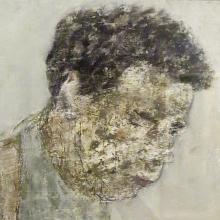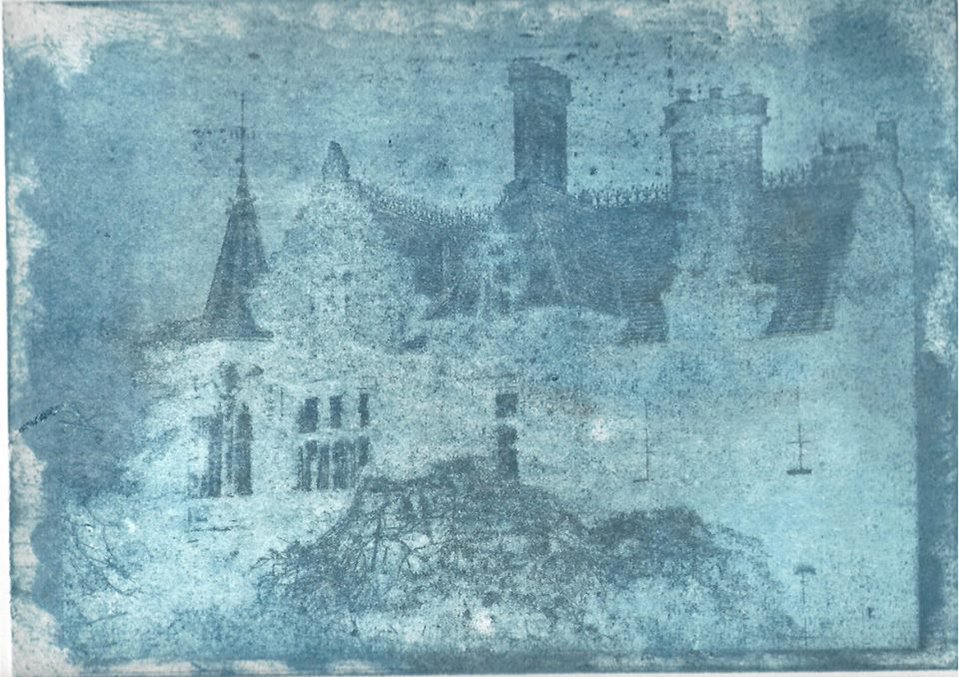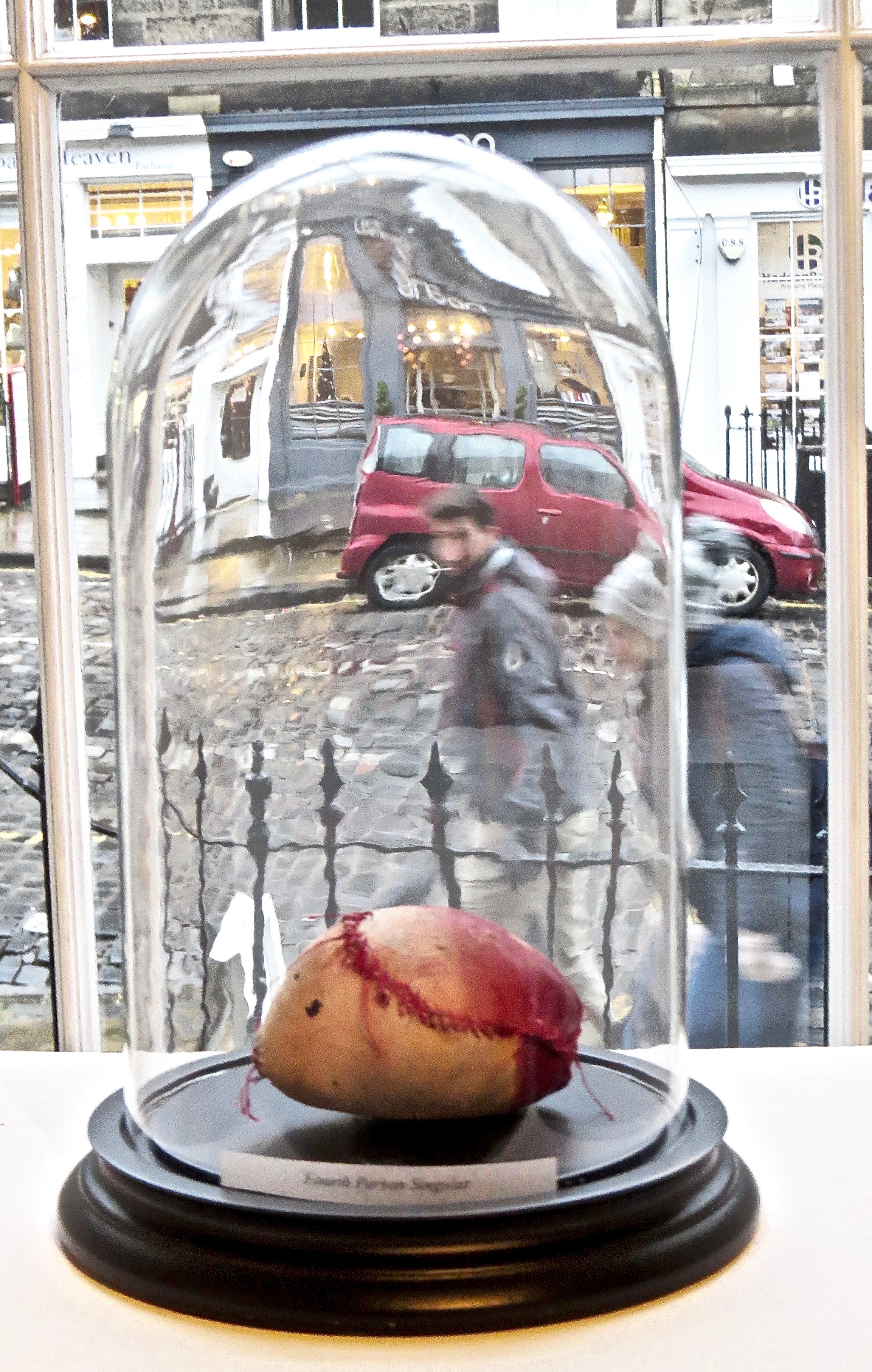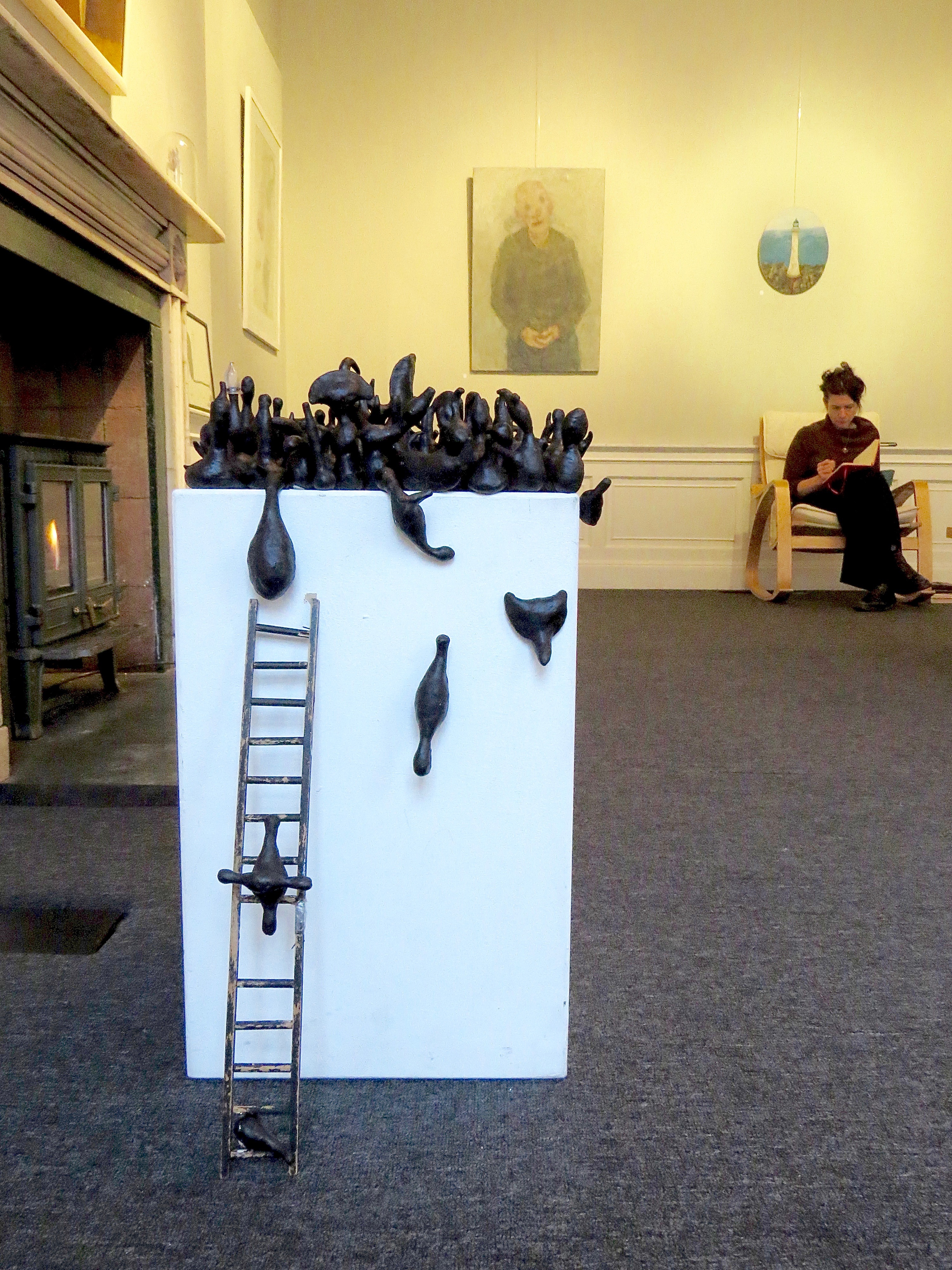
Four artists with complementary interests are showing in a joint Whitespace exhibition on Howe Street until Friday.
Three paintings by Joyce Gunn Cairns appear, of which this reviewer’s favourite was ‘Young Man’.
It is a characteristically nuanced piece, making one wonder whether the subject’s weathered face is that of a young man prematurely aged, or an old man young at heart.
This psychological irresolution and the busyness of the brushstrokes are interestingly at odds with the painting’s restrained palette and steady composition.
Like so many of her works, this is less a statement of fact than an invitation to reflect.

Tim Le Breuilly’s architectural certainties dissolve before the eyes with time, in shadows, or under the spume and spray of storms.
‘Rona Lighthouse’ is astonishingly powerful. One can almost feel the thud and slash of wave hitting masonry. Solid and liquid contend. The very surface of the print appears sometimes to be in motion.

Below, an evanescent 'Fettes College'.

It’s easy to mistake Paul Muzni’s large oils as straightforward. There’s something so self-confident and economical in his handling of paint and form that’s one tempted just to step back and admire.
But in ‘The New Model’, for example, there are more unresolved questions to consider. Which of the two is ‘new’? Are they rivals for attention? Do they get on? Is there another artist – apart from Muzni – about to appear? Are those turned-away faces expressions of anticipation or retreat?

‘The Visit’ is similarly perplexing. The viewer wonders who is visiting whom. Unresolved issues of social power, possession, intrusion hover at the threshold of that open door. Muzni’s subjects may be stripped bare, but they exist in nothing like Edenic simplicity.

Tessa Berring’s surreal creations draw on medieval alchemy, botany and anatomy for inspiration, and she acknowledges also the influence of Hieronymous Bosch, Paul Klee and Joan Miro.
I loved the undefinable oddity of ‘Fourth Person Singular’ – a mixture of squashed cricket ball, rotting mango and something unpleasant washed up on a beach.

Intriguing too were her ‘Black Creatures’. Amorphous, intelligent, purposeful little turds, populating various gallery spaces on some quest for knowledge or territory.

And finally her ‘Anatomical Illustration’: a blend of frog, human and insect, curiously quartered in two planes, explaining with scientific seriousness a creature that has never existed.

Berring’s work is simultaneously humorous and unsettling. It subverts with credible untruths, unties what it seems to sew up, attracts and disgusts. For me, it was the unexpected highlight of the exhibition. —AM